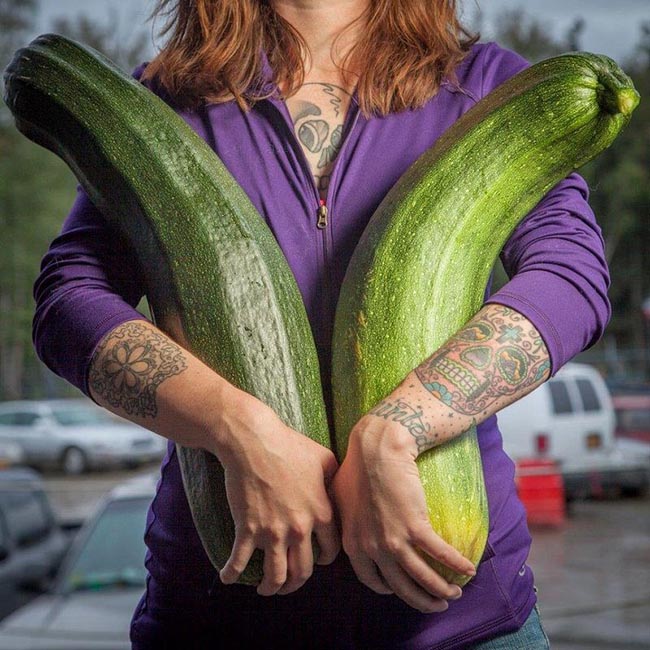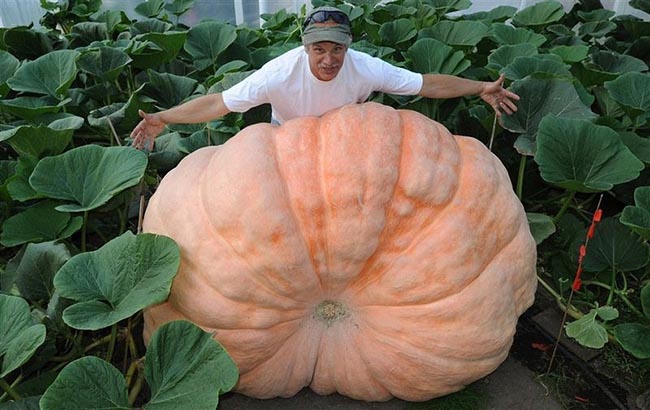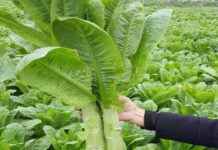For example, a 138-pound (nearly 63 kg) cabbage, a 65-pound (nearly 30kg) watermelon, and a 35-pound (16 kg) broccoli are just a few of the “monster” vegetables that have grown in the soil of Alaska in recent years. “Some of them are so big, you can’t even recognize what they are,” said Kathy Liska, the fair’s produce superintendent.

A giant pumpkin and cabbage at the Alaska State Fair
Why do vegetables grow so big in Alaska? It’s because of the sun and the climate.
Alaska typically has a very short growing season, averaging just 105 days. To compare, California’s growing season lasts nearly 300 days. However, Alaska’s growing season has almost no nights.
The region is located near the Arctic Circle, where it receives up to 19 hours of sunlight each day, during the summer and at the peak of the growing season. The extra hours of sunlight allow Alaska’s crops to grow vigorously.

Even with a significantly shorter growing season compared to the rest of the United States, Alaska’s gardeners can still produce some of the world’s largest vegetables.
Enhanced photosynthesis also makes the produce sweeter. For example, Alaska carrots spend nearly 3/4 of their day under the sun to produce sugar, and only the remaining 1/4 of their time is used to turn that sugar into starch. Vegetables like cabbage, broccoli, kale, Brussels sprouts, turnips, potatoes, sugar beets, carrots, chard, and spinach all thrive here.

Farmers growing giant vegetables win awards at the Guinness World Records
Most of these giant vegetables are grown by farmers in the Matanuska-Susitna Valley. Initially a government experiment in the 1930s to increase the country’s agricultural productivity during the Great Depression, over 240,000 acres were allocated to farmers from Minnesota, Wisconsin, and Michigan to participate in the program.

But the lack of infrastructure and basic services discouraged the early settlers, and by 1940, over half the population had left the valley. By 1965, only 20 families remained. While not an explosive success, the farms in the valley became stable enough to supply milk and other agricultural products. This, paired with the unusually short growing season and the scale of the giant vegetables, has made the vegetables from here a regional brand.

A farmer in Alaska holding two giant pumpkins for a vegetable contest

A giant cabbage at the Alaska State Fair

A giant pumpkin weighing about 1,780 pounds (over 800 kg) inside a greenhouse in Anchorage
A comparison of a moose alongside a giant pumpkin at the Alaska State Fair’s pumpkin contest


































